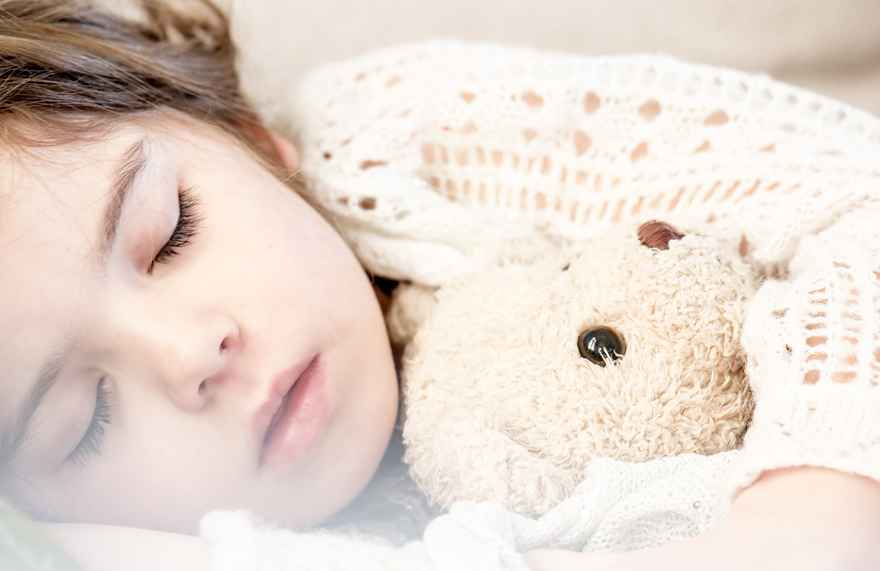Night Terror or Nightmare? What's the difference?

There is a lot of confusion around nightmares and night terrors and I want to clear some of that up for you. The age and time they start, the presentation and the way you should handle the two are quite different. Understanding these differences will really allow you to respond appropriately when your toddler or child experiences one of these events. Let’s kick off by discussing night terrors. Night Terrors: Many parents have experienced the alarm of hearing their child yelling out erratically from their bedroom. And when they rush in, their child is often crying in their bed, they can also be sitting up or standing up out of bed. Their hearts can be beating very fast and they can appear hot and sweaty. Their eyes can be open but they will not recognise you and they will appear non responsive and not hear you. It can look very strange and distressing. I think one of the hardest parts to hear is that your child will often yell out things like “Stop!”, “No!”, “Don’t!” or “Help!”. Naturally any parent hearing this will assume their child is having a very distressing dream and want to immediately comfort them. They sound distressed, yet thankfully they are not. The truth is your child is experiencing a night terror and technically they are still asleep. It is not a dream at all. Night terrors usually last up to around 15-20 minutes but can often be quite short as well. They will generally occur in the beginning of the night as this is when we experience our deepest sleep or lots of slow wave sleep. Night terrors occur when your child moves abruptly from deep sleep (non REM sleep) to partially awake. Kind of like being stuck between sleep cycles, it’s an in between place where part of the brain is trying to go back to sleep and part of the brain is trying to wake up. It is very hard to wake your child in this state and console them. And in the morning your toddler or child will have no memory of this happening at all. Night Terrors are considered to be in the same family of sleep disorders as sleepwalking, and it is proposed that a sudden arousal from non-rapid eye movement sleep (NREM, deep sleep) is the cause of these disorders. They can have some genetic factors to them as well, for example if the child has the strong tendency to sustain slow wave deep sleep. There are also environmental factors that can play a role in contributing to more frequent night terrors. These are factors like excessive exercise, stress and anxiety and overtiredness (a massive one). Many times also if your child is sick with a fever, night terrors can happen more frequently. How should you handle a night terror? We know that night terrors are not harmful for toddlers and children. If anything they can be a little more scary for the parent who is witnessing it! Your child will have absolutely no memory of the event in the morning and will not have been scared at all. We don’t want to interfere by trying to wake our child up while this is happening. It’s a hands off approach where the only thing you need to make sure is that they cannot hurt themselves physically or run into anything (if they get up out of bed). Just calmly wait it out. You child will soon be back into a deep sleep and the night terror will have passed. Now let’s talk nightmares: Nightmares are something that everyone has once in a while. Children experiencing more emotional tension or who have been upset during the day will probably have more nightmares because they often come from the daily struggles in their life. Nightmares are not nice and can definitely be very scary however they are a very normal part of your child’s development. Nightmares can begin around 2.5 - 3 years or generally when your toddler begins to develop a strong imagination. Before then any crying is more commonly a baby or toddler moving from one sleep phase to another (they are called confusional arousals). Rather than occurring in the first part of the night, nightmares occur usually more in the early morning when we are experiencing our highest levels of dreaming sleep (REM sleep). As a parent it’s important to be really mindful about what you put into your child’s imagination and what they are exposed to. Anything scary that they may watch on television or the iPad can easily trigger a nightmare, which we obviously want to avoid. With nightmares children will often wake up crying and distressed and have a strong memory of the dream and be able to vividly retell it to you. Listen to them while gently calming them down, and reassure them that in no way is it real and confirm that it was just a dream. Remind them they are safe and secure and redirect them to really positive feelings and thoughts before they go back to sleep. Here’s a handy table to quickly tell the difference between the two: [table id=1 /]
Categories
- Testimonials (76)
- Blog (26)
- Uncategorized (2)
- Daylight Savings (2)
- Food and Sleep (4)
- Naps (4)
- 4, 5, 6 Months (2)
- 7-12 Months (1)
- Newborn (4)
- Night Sleep (2)
- Sleep teaching (7)
- Teething (1)
- Toddler Sleep (2)
- Holidays and Travel (2)
- Testimonials_1 (12)
- Testimonials_2 (12)
- Testimonials_3 (12)
- Testimonials_4 (12)
- Testimonials_5 (12)
- Testimonials_6 (12)
- Testimonials_7 (4)


0 comments
Leave a comment
Please log in or register to post a comment